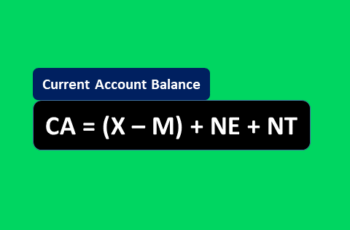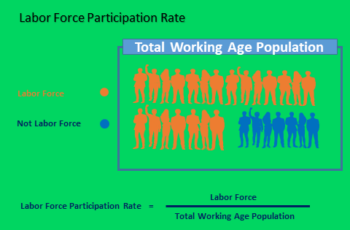The Consumer Confidence Index (CCI) measures the financial situation and consumers’ expectations about current and future economy.
In other words, the CCI measures consumers’ optimism and pessimism levels about the economy now and in the future.
The CCI is a survey-based indicator that asks about consumers’ feelings, not technical economics questions. So, It is a good indicator for understanding the overall economic situation of consumers.
The CCI is a lagging indicator (however, it precedes GDP) because consumers’ expectations and feelings change after some economic changes.
Consumer confidence measures are released by different organizations mostly by non-profit organizations with different names and slightly different methods of collecting data. This article explains the Consumer Confidence Index released by the Conference Board in detail. Moreover, other similar indices from the USA and around the world are brought to you in the end.
Consumer Confidence Index Calculation
The CCI is a survey-based index conducted by the Conference Board. And 5000 households participate in the survey.
Questions that the survey asks are about:
- Current economic conditions;
- Current employment;
- Expected economic conditions in the next six months;
- Expected employment conditions in the next six months; and
- Expected financial conditions for the next six months.
The first two questions are about the current economic condition, and the last three are about the future.
The Conference Board categorizes responses as positive, negative, or neutral.
Using the collected data the “relative value” is calculated for each question. Each question’s positive responses are divided by the sum of positive and negative responses. The relative value for each question is then compared with each relative value from the base year (1985). This comparison of the relative values gets us an “index value” for each question.
The final value (that the media talks about) of the CCI is the average of the above five questions. More positive responses result in a higher index value and more neutral and negative responses result in a lower index value.
The Importance of Consumer Confidence
In developed nations, consumption accounts for the largest pie in the Gross Domestic Product (GDP).
For example, consumption accounted for almost 70% (68%) of the USA’s GDP.
So, we cannot ignore the importance of consumer confidence due to its size in the GDP.
Companies need to adjust their production and services to match consumer demand. For example, companies must reduce output if the CCI value drops and increase output when it rises.
Production and employment are interconnected. For example, if companies increase production due to a high CCI value, they hire more workers.
The CCI is a good indicator of the business cycle. When the CCI value falls in several consecutive months, the GDP falls as well. And if the GDP falls in two consecutive quarters, a recession may officially be announced by the government.
Reading the CCI Value
The Consumer Confidence Index benchmark is 100, set in 1985. And releases on the last Tuesday of every month at 10 a.m. E.T.
- >100 indicates that consumers are more optimistic than in 1985.
- = 100 indicates that consumers are neutral compared to 1985.
- <100 indicates that consumers are more pessimistic than in 1985.
The value around 100 does not tell the whole story. Generally, the CCI index of this month is compared to the last month and the expected value. If there is an improvement, it is a good signal for the economy and the national currency. And if it fails, it is a bad economic signal.
Look at the following image.
The CCI’s impact is low during normal economic conditions. However, it becomes more important during a recession, or when there is a possibility of a bubble.
Other Similar Consumer Indexes About Consumers’ Feelings in the USA
Several indexes survey consumers’ feelings about their expectations of the economy.
They are somehow similar. However, their focuses vary.
For example, the Consumer Confidence Index (CCI) puts more weight on employment, but the United States Consumer Statement focuses on prices or inflation.
1. United States Consumer Sentiment
The University of Michigan Consumer Sentiment Index (UMCSI) released by the University of Michigan measures the views of a minimum of 50 families monthly by asking around 50 questions about their own financial situation, their view about the general economy in the short run, and their view about the general economy in the long-run.
2. Bloomberg Consumer Comfort Index
This index is produced by interviewing 1000 adults and asking questions about the national economy, personal finances, and buying climate.
3. Consumer Confidence Average Index
Consumer Confidence Average Index is produced by averaging the Consumer Confidence Indexes, The University of Michigan Consumer Sentiment Index, and the Bloomberg Comfort Index.
4. Gallup Economic Confidence Index
Gallup Economic Confidence Index is produced by asking Americans to evaluate the present economic situation and what they perceive as the future economic situation is getting better or worse.
Consumer Confidence Index in China
The CCI in China is produced by the National Bureau of Statistics of China.
China’s consumer confidence indicator gives more weight to households’ consumption and saving. The survey includes questions about their expected financial situation, their feelings about the general economic situation, employment, and capability of savings.
An indicator value above 100 indicates a boost in the consumers’ confidence less prone to save but more prone to spend money in the next 12 months. Values below 100 indicate a pessimistic attitude and the opposite of above 100 indicator value.
Japan Consumer Confidence Index
Japan’s consumer confidence index is produced by the Cabinet Office by visiting around 4700 households consisting of more than two people.
This survey asks four questions about the overall perception of livelihood, income growth, and purchase of durable goods. The CCI is an average number of the above four questions. A reading above 50 points represents optimism, and below 50 represents pessimism.
UK Consumer Confidence Index
The Growth for Knowledge produces the UK’s CCI. It surveys around 2000 consumers and asks questions to rate the relative level of past and future economic conditions.
Questions are about the overall economic situation, saving level, climate for major purchases, and personal financial condition.
Euro-zone Consumer Confidence Index
The Directorate General for Economic and Financial Affairs of the European Commission produces the Euro-zone consumer confidence. The survey asks four questions about the household financial situation, the whole economic situation, employment expectations, and saving.






